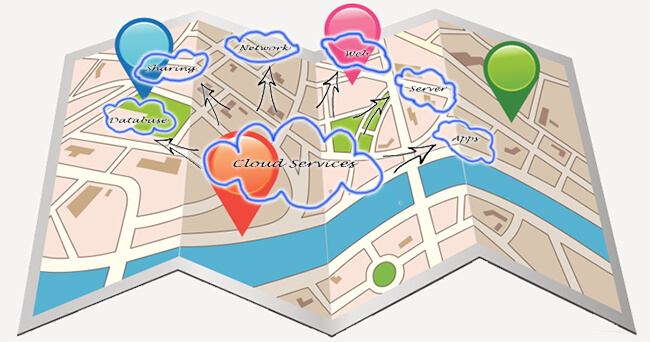Why You Should Not Use SaaS to Automate Local Page Creation and Optimization
Software as a Service (SaaS) is a model for licensing and delivering software. The software is centrally (cloud) hosted and licensed on either on a monthly or annual subscription basis. Also known as “on-demand software,” SaaS is generally accessed through the user’s web browser. One of the biggest advantages of the SaaS model is reduced IT support costs, made possible by shifting responsibility for maintenance and support to the SaaS provider.
Some of the most commonly used business applications for the SaaS platform include accounting, customer relationship management, office and messaging software, service desk management, payroll processing software, management information systems, computer aided design (CAD) software, and content management.
Because SaaS-based applications are centrally located, updates generally occur much more frequently than with traditional software.
The Current State of Local Search
As evidenced by the back-to-back release this past summer of the Google My Business dashboard and the Pigeon algorithm update, local search is very much on Google’s mind. Local search is likewise an important issue for many of the bigger brands with hundreds or even thousands of locations. This particular challenge of creating and optimizing separate location pages has been met, at least in part, by the use of SaaS platforms that provide an easy to implement automated local page creation and optimization solution.
What Makes Local Pages so Important?
- A branded and optimized local page is an absolute necessity for ranking for local search queries.
- It gives the search engines the ability to display the closest location page for branded search terms.
- Without these location pages, the brand’s home page will probably be displayed first, forcing the user to hunt for the location information being sought; a number of users will likely be lost during the process.
If you choose not to provide location pages for local search, other directories are sure to take up the slack, and considering the preference given to directory sites by Google’s Pigeon update, their search results will probably rank well. You won’t have the same degree of control over your information on the directories as you would have on your own branded location pages, and your listing will appear alongside those of your competitors.
What’s the Problem with SaaS-based Page Optimization?
SaaS platforms build out your brand location pages by creating subdomains of your main business domain. These pages are template-based and can be created and deployed very quickly. They typically include your basic NAP information, customer reviews and maps, and are usually well optimized.
The drawback is that the pages are hosted independently of your main business website. This means that if you ever stop paying, your location pages disappear. While your content will be returned to you when you cancel, you typically only receive HTML content. All of the indexed URLs that provided the real SEO juice are lost.
What’s more, the HTML files that you do receive are usually outdated and the bulk export file is not going to be of much help to you in creating new location pages.










